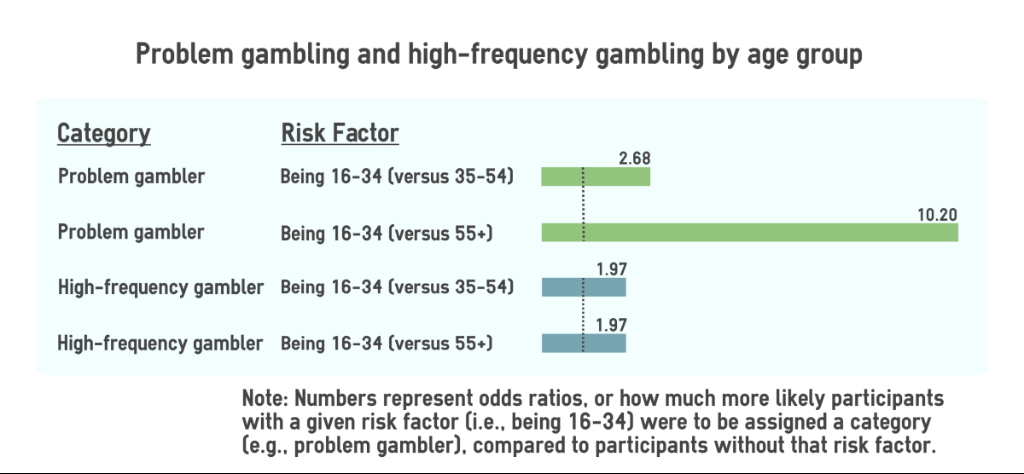The WAGER, Vol. 23(5) – Problem gambling among young women
The gambling landscape is continually evolving, and gambling operators are looking for new ways to attract customers–including young women. This week, The WAGER reviews a study by Simone McCarthy and colleagues that explores patterns of gambling-related problems among women of different ages.
What is the research question?
Do women of different ages experience gambling-related behaviors differently?
What did the researchers do?
The researchers used convenience sampling to recruit an online nationally representative sample of 509 women aged 16+ from Australia. Participants responded to questions about gambling-related problems on the Problem Gambling Severity Index (e.g., “Have you felt guilty about the way you gamble or what happens when you gamble?”)1, frequency of gambling, and age. Participants were classified into groups based on age (i.e., 16-34 = younger; 35-54 = middle-aged, 55+ = older). The researchers performed chi-square tests, analysis of variance, and logistic regression analyses to assess the relations between participant age, gambling frequency, and gambling-related problems. Only participants who reported having participated in at least one of four gambling activities (i.e., casino gambling, electronic gambling machines, horse betting, and sports betting) in the past 12 months were included in this analysis.
What did they find?
Women of different age groups engaged with casino gambling, electronic gambling, horse betting, and sports betting in significantly different ways. Younger women were over 10 times more likely to be problem gamblers than women aged 55 and older. (See Figure 1). They were also more likely to gamble at high frequencies across these types of gambling. Older women were the most likely of age groups to be classified as non-problem gamblers and to gamble infrequently across these types of gambling.

Figure. Problem gambling and high-frequency gambling by age group.
Note: Numbers represent odds ratios, or how much more likely participants with a given risk factor (i.e., being 16-34) were to be assigned to a category (e.g., problem gambler), compared to participants without that risk factor. Click image to enlarge.
Why do these findings matter?
Different patterns of play among women of different age groups suggests that a “one-size fits all” approach to reducing gambling-related problems might not be effective. Future research should examine whether these findings are stable and, if so, why younger women are more likely to gamble frequently and experience gambling-related problems. These answers might help guide policy makers and treatment providers who seek to reduce gambling-related harms among women.
Every study has limitations. What were the limitations in this study?
The researchers measured the frequency of casino gambling, playing EGMs, horse betting, and sports betting using a scale developed specifically for this study. The authors did not offer any justification in the study for why they chose to include these gambling behaviors in the study. Women of different age groups might differ in the way they engage in other types of gambling available in Australia (e.g., lottery, keno).
For more information:
If you think that you or anyone you know might be experiencing substance use or gambling-related problems, you can find help resources on the BASIS addiction resources page.
— Pat Williams
What do you think? Please use the comment link below to provide feedback on this article.
________________
1Scores on the PGSI were added together to classify participants into four groups: (1) non-problem gambler = 0; (2) low-risk gambler = 1-2; (3) moderate-risk gambler 3-7; and (4) problem gambler = 8-27.